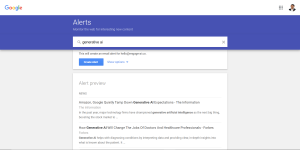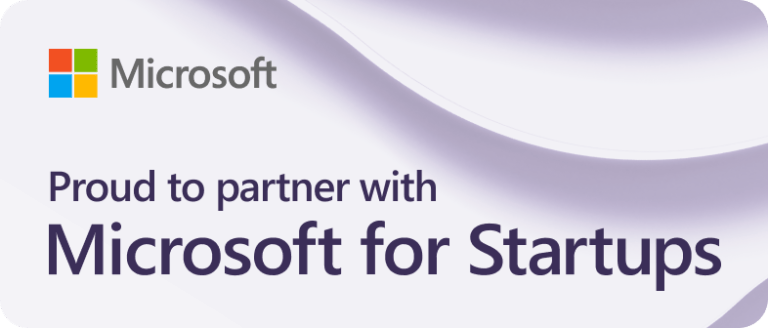LinkedIn is a fantastic tool for finding your target market, new clients, and prospects. It’s also a great way to keep in touch with old contacts. However, there are a few things you should know before you start prospecting on LinkedIn.
LinkedIn has become the world’s largest professional network. The stats estimate that there are over 700 million members worldwide. If you’re looking to find new clients, then LinkedIn is a great place to start.
But before you get started, here are a few things you need to know.
What Is LinkedIn Prospecting?
To understand LinkedIn prospecting, you need to understand what sales prospecting means in general.
Sales prospecting refers to any activity where you try to identify potential customers or leads who might be interested in your products or services. This activity could include cold calling, email marketing campaigns, social media outreach, networking events, etc. The goal of this type of prospecting is to generate interest from people who may not have heard about you yet.
Regardless of how you choose to do sales prospecting, the only thing that changes is the medium.
Therefore, LinkedIn prospecting means using LinkedIn as one of many tools to help you reach out to prospective buyers. In other words, it doesn’t matter if you use LinkedIn to send emails, make calls, attend conferences, meetups, etc., so long as you can effectively communicate with those individuals and eventually get them to buy from you.
The best thing about LinkedIn prospecting is that it can help you reach out to more than just one person at once.
We will go into more detail very soon.
Is LinkedIn Good for Prospecting?
Yes! There are two main reasons why LinkedIn is such a powerful platform for sales prospecting:
#1- People love talking about themselves online.
They share their interests, hobbies, jobs, education history, family life, etc. So by simply asking questions like these, you’ll learn a lot about someone without even having to ask anything specific.
And since most people don’t mind sharing information about themselves, they’re usually happy to answer some basic questions.
You usually don’t need to ask anyone about themselves; you can find relevant information about people right on their profiles and in their profiles.
#2- Most professionals spend time on LinkedIn every day.
Therefore, the chances are high that you’ll run across someone who works somewhere similar to where your ideal audience works.
For example, I’m sure you’ve met plenty of accountants, lawyers, doctors, engineers, marketers, designers, writers, consultants, business owners, entrepreneurs, etc., all through LinkedIn. These types of connections are gold mines because they give you access to valuable insights into companies and industries that you wouldn’t usually come across otherwise.
And if these professionals are active on LinkedIn, there’s no better place to find your target audience.
So why should you use LinkedIn for sales prospecting?
Why Use LinkedIn for Sales Prospecting?
There are so many tools out there today that allow us to find new prospects quickly and easily.
For example, you can search Google for keywords related to your industry, then produce content based on those keywords hoping that your ideal audience will find you and buy from you. You can also browse Facebook groups, Twitter hashtags, YouTube videos, blogs, forums, etc. However, none of these platforms offer the same level of personalization that LinkedIn does as a prospecting tool.
In short, none of the other platforms for prospecting work quite like LinkedIn. Here’s why:
You can search for anyone anywhere in the world.
This search includes both current employees and former ones. It also allows you to look up people based on keywords, job titles, company names, industry sectors, locations, skills, etc. If you want to know what kind of products or services an individual has worked on before, this tool is perfect for finding that info.
It gives you complete control over how much data you see when searching for someone. For instance, you could choose only to show results within 50 miles of your location.
Plus, unlike any other social media site, LinkedIn lets you connect with professionals eager to do business on the platform.
Your results show right away.
You usually won’t need to wait days or weeks before getting any response. This quick response makes your entire process much faster and easier. It gives you instant insight into what others think about specific topics.
When searching for potential customers, you want to know everything possible about them. LinkedIn helps you do that. For instance, when looking for an accountant, you might be interested in learning whether they have experience working with startups, which small business accounting software they use, etc.
By using the platform, you gain knowledge about them and build trust between yourself and the individual.
You can follow up immediately after contacting someone.
When you send a connection request on LinkedIn, and your target prospect accepts your request, you can follow up right away. If he doesn’t respond within 24 hours, it means he probably isn’t interested. But at least now you know this person exists and has an email address.
If you want to get more detailed info about him, just click his name and go directly to his profile page. From there, you have complete control over what type of contact you make with him.
You can see everything instantly.
When you log onto LinkedIn, you can view everyone else’s profile within seconds. You can always take advantage of this feature if you want to check something off your “Is this person my target audience” list.
To summarize, LinkedIn gives you a lot more control over how you approach potential customers than anything else available online. And it doesn’t cost a dime!
How to Search for Prospects on LinkedIn (Basic Search)

#1- Go to www.linkedin.com and locate the search box
#2- Enter some essential criteria such as location, title, keyword, etc.
#3- Click Search or Enter.
#4- Your results appear almost instantaneously.
#5- Use the filters to narrow down your searches even further.
#6- Once your search is complete, browse the search results and view potential prospects’ profiles.
#7- That’s it!
How Do You Do B2B Prospecting on LinkedIn?
Now to the big question.
How do you use LinkedIn effectively to find new leads?
The answer lies in two parts:
1) What are the best ways to reach out to prospective clients via LinkedIn
2) Which types of content should you post on LinkedIn so that they will notice you?
Let me explain…
The first step is to create a professional yet personal brand on LinkedIn. You don’t want to come across as a spammer who sends hundreds of messages every day. Instead, focus on building relationships by sending relevant messages to people whose interests match yours.
The second part involves publishing quality relevant content on LinkedIn. When you share valuable information, more people will reach out to connect with you. And then LinkedIn will start showing you as a “mutual connection” based on the following you have built. These recommendations help increase your visibility among your peers. They also give you credibility because LinkedIn makes these connections assume you’re worthy of recommendation. This increased credibility makes it easier for others to connect with you too.
Here are three tips to keep in mind while creating great content on LinkedIn:
#1 - Be genuine.
Don’t try to sell anyone anything. Share valuable articles instead. People appreciate getting helpful advice rather than having their inboxes filled with sales pitches.
#2 - Focus on providing value.
Make sure each post you publish provides real value to readers. It could be related to business topics but not necessarily. For example, if you work in marketing, you might write about social media trends. Or maybe you specialize in SEO and provide tips on improving website rankings. Whatever topic you choose, make sure it helps someone solve a problem.
#3 - Write long-form posts.
Longer pieces tend to receive higher engagement rates. So consider writing longer status updates that include infographics, case studies, etc.
Yes, there are many different ways to get started using LinkedIn. But, ultimately, the goal isn’t just to build up an email list or large following; it’s to develop meaningful relationships with other professionals.








